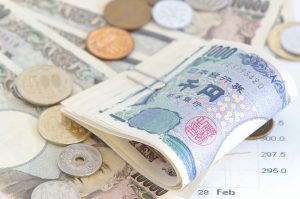After decades of mild but persistent deflation, Japan finally reached its 2 percent inflation goal in April – largely due to the global surge in energy prices and an unprecedentedly weak yen against the dollar. Japan has enjoyed relatively stable prices since the mid-1990s, and the rapid rise in global prices has caught Japanese consumers largely off guard. Japan’s long-standing monetary easing and fiscal spending leaves limited resources to withstand the cost of living pressures amid stalling annual wages.
For decades, raising prices has been a taboo topic in Japan. While 2 percent inflation is relatively low by international standards, Japan has been known as the land of falling prices. The lost decade after the economic bubble burst in 1991 ushered in a state of “stagflation,” where consumer prices rise amid falling national income and a stagnant economy. That experience created a generation of price-conscious consumers where stable prices became the norm.
Then the global COVID-19 pandemic led the Japanese economy to contract by 4.5 percent in 2020.
Today, many Japanese consumers are feeling the pinch of unaccustomed price hikes without increases in salary. The Consumer Price Index (CPI) for basic items jumped to a seven-year high, reaching 2.5 percent in May 2022. According to Teikoku Databank, the prices of over 10,000 consumer goods have risen by 13 percent.
Japanese companies are hesitant to pass on price hikes to consumers and tend to absorb price increases. Yet foods like bread, instant noodles, chips, seafood, frozen food, and fruit have become more expensive, as highlighted by Nikkei Shimbun. Many Japanese companies have opted for stealth price hikes, in which companies shrink quantity and volume rather than raising prices outright. But major Japanese chain restaurants Yoshinoya, Sukiya, and Matsuya have raised the price of beef bowls due to the increase in beef prices. Sixty-five percent of Japan’s beef consumption is met by imports. Additionally, 75 percent of livestock feed is also imported, adding to the cost-inflationary pressures affecting domestic meat and poultry production.
Since lower income earners spend a higher proportion of their income on daily necessities, price hikes will put significant pressure on low-income families, especially single mothers and families with school-age children. The government has introduced oil and gas subsidies to keep final prices in check and given cash handouts for families. But food price hikes are projected to continue over the summer due to the steady global demand in wheat and packaging materials.
Meanwhile, the Bank of Japan has defended continuing low interest rates amid rising prices and hopes to shift the “deflationary mindset” of the Japanese people. BOJ Governor Kuroda Haruhiko was forced to make a public apology after suggesting “the Japanese public are getting used to inflation.”
The BOJ has been aiming for a 2 percent inflation target for nearly a decade. The goal was to stimulate the economy by getting people to consume and invest, which would lead to increased salaries and a steady rise in food and consumer goods prices. But the current cost-push inflation rate of roughly 2.4 percent is expected to last until the end of the calendar year, which is enough to make people dip into their savings, reducing consumer confidence. Households are set to become further savings-orientated and are unlikely to loosen their purse strings in the current economic climate. This is a significant obstacle to the recovery of Japan’s pandemic-hit economy, which depends on increased consumer spending.
The economic headwinds also provide yet another reason for businesses to stall salary increases. Corporate Japan faces immense pressure from the government to raise wages, but this requires higher corporate profits and increased productivity. Exporting firms that benefit from the weak yen are likely to see an increase in profits and are expected to pass profits on as higher wages for employees. But under the current economic circumstances, it will be difficult for all workers to hope for wage increases.































